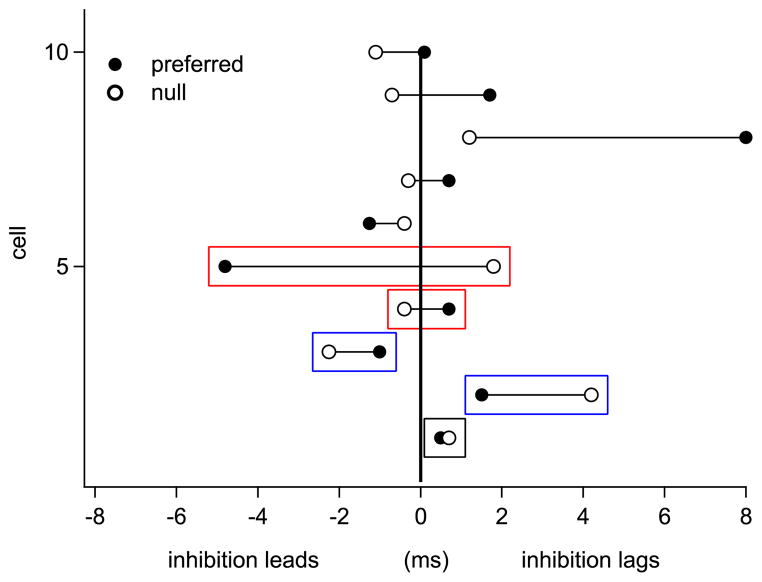Figure 6.
The timing relationship between excitation and inhibition does not correlate with the directional preference. We plotted the relative time of peak inhibition compared to peak excitation (0 ms) for the preferred conductance pairs (filled circles) and the null pairs (open circles) in each of 10 cells. The cell in the lower red box is consistent with the timing hypothesis, where inhibition leads excitation in response to the null sweep, and lags in response to the preferred. The upper red box shows the opposite relationship, where inhibition leads in response to the preferred but lags in response to the null. The blue boxes show examples where the temporal relationship between inhibition and excitation is the same for both the preferred and null, with inhibition either leading for both (top blue) or lagging for both (bottom blue). The black box shows nearly coincident excitation and inhibition in both the preferred and the null (inhibition lags excitation by < 1 ms in both).

